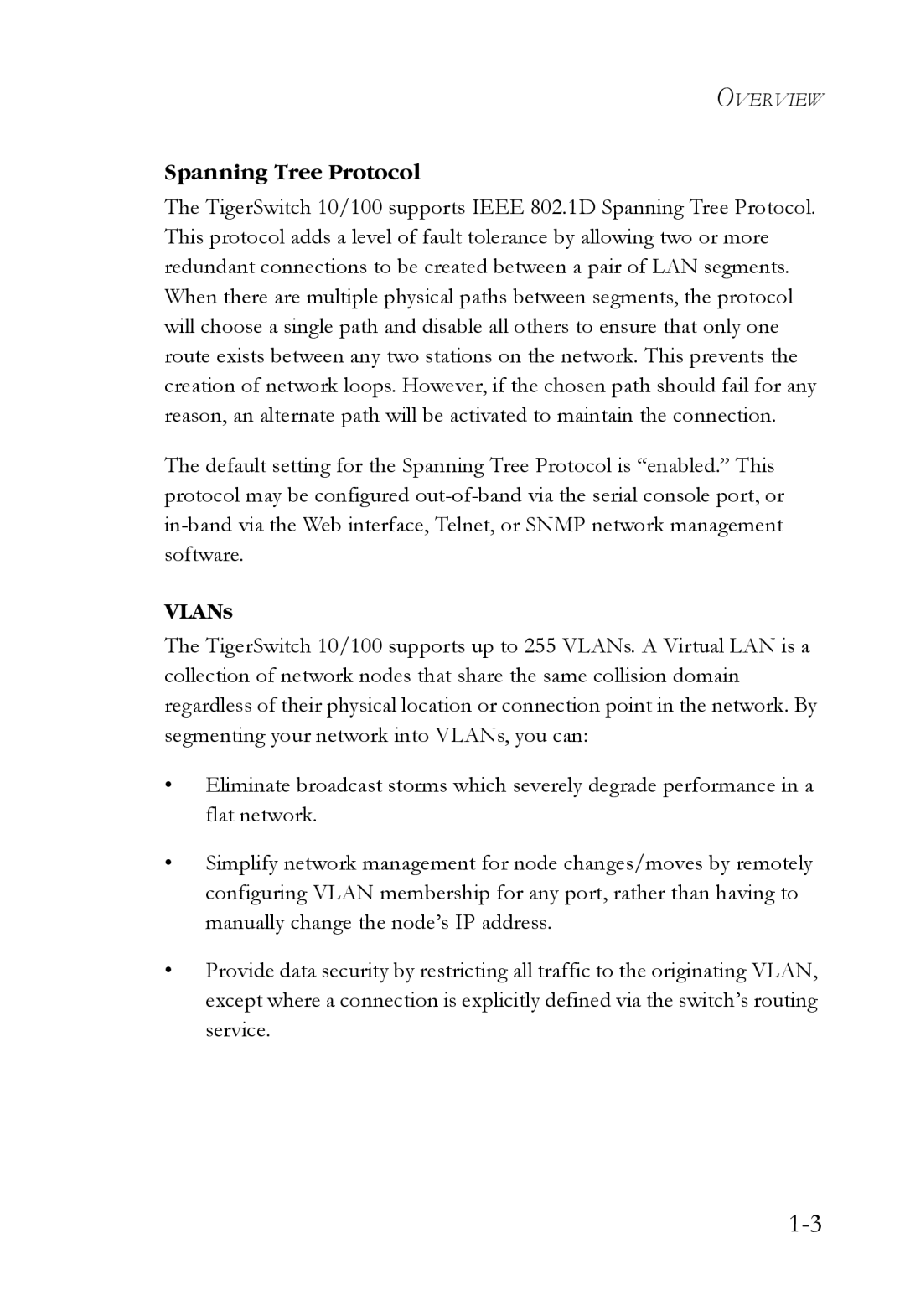OVERVIEW
Spanning Tree Protocol
The TigerSwitch 10/100 supports IEEE 802.1D Spanning Tree Protocol. This protocol adds a level of fault tolerance by allowing two or more redundant connections to be created between a pair of LAN segments. When there are multiple physical paths between segments, the protocol will choose a single path and disable all others to ensure that only one route exists between any two stations on the network. This prevents the creation of network loops. However, if the chosen path should fail for any reason, an alternate path will be activated to maintain the connection.
The default setting for the Spanning Tree Protocol is “enabled.” This protocol may be configured
VLANs
The TigerSwitch 10/100 supports up to 255 VLANs. A Virtual LAN is a collection of network nodes that share the same collision domain regardless of their physical location or connection point in the network. By segmenting your network into VLANs, you can:
•Eliminate broadcast storms which severely degrade performance in a flat network.
•Simplify network management for node changes/moves by remotely configuring VLAN membership for any port, rather than having to manually change the node’s IP address.
•Provide data security by restricting all traffic to the originating VLAN, except where a connection is explicitly defined via the switch’s routing service.
